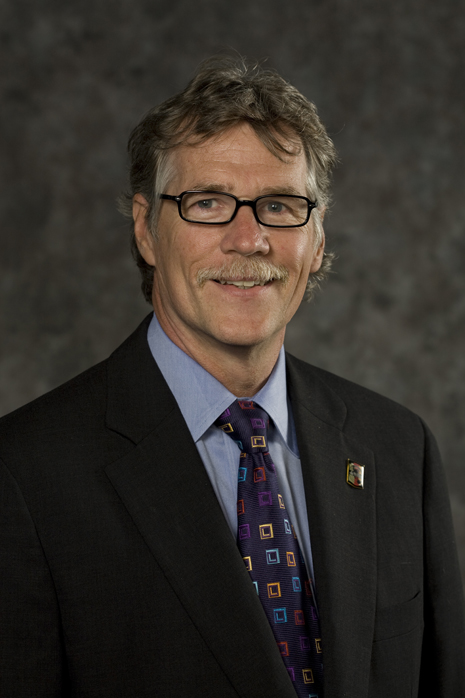Environmental Nonprofits Prefer Collaborative Strategies
FAYETTEVILLE, Ark. – Many large environmental nongovernmental organizations prefer to engage firms through collaborative rather than adversarial strategies to elevate the role of business in solving environmental problems, a University of Arkansas study shows. David Hyatt, senior assistant dean in the Sam M. Walton College of Business, surveyed managers at 14 such organizations and found that they work closely with businesses when mutual value can be identified. The organizations pursued adversarial approaches for environmental change only when collaborative strategies failed.
“The goal of this qualitative study was to develop a better understanding of environmental nongovernmental organizations’ strategic decisions to engage business organizations,” Hyatt said. “The assumption was that these organizations managed a dilemma between adversarial and collaborative strategies for changing the behavior of businesses. But we found no such dilemma. By far, collaboration was the favored strategy.”
Environmental nongovernmental organizations, frequently called ENGOs, are legally constituted organizations that operate independently from any government. Funded by private donors, corporations and other institutions, these groups focus on issues of importance to the natural environment and seek to influence and limit human and institutional damage to the environment.
Environmental organizations do this in a variety of ways, including legal action and campaigns to expose corporate practices. More recently, ENGOS have formed collaborative partnerships with government and business – including businesses that cause environmental problems. These partnerships may provide training and assistance to maximize the use of local resources and establish environmental solutions for a company’s operations, products or supply chain. They also assist in development of codes of conduct.
In Hyatt’s study, examples of collaboration included product certification systems, educational activities and multi-stakeholder dialogue. Although the organizations reported efforts to be strategic about collaboration – that is, they considered their niche within the overall breadth of services offered by all ENGOs or chose firms that would be suitable partners – more than half of the collaborations came about because firms approached the ENGOs rather than vice versa.
Data from the study revealed three strategies environmental organizations pursued to better position themselves for collaboration with business organizations. These strategies included structuring the organization for collaboration, employing personnel who understood the value of market systems and differentiating capabilities from other organizations.
Structural approaches included increasing staff and differentiating job roles, forming various corporate engagement teams and creating organizational structures to promote environmentally sustainable business practices. As an example of the market approach, some ENGOs had representatives from business sit on their governing boards. Other ENGOs formed councils with business membership.
Organizations in the study emphasized their intentions to differentiate their collaborative niche from that of other organizations, Hyatt said. Aware of the strengths and capabilities of other organizations, many ENGOs reported adjustments to their strategies to carve out their own competitive niche.
Respondents reported sensitivity to resource constraints and a desire to avoid duplicating efforts, which allowed organizations to move out of areas where others had demonstrated strength. Hyatt also found that ENGOs differed in their organizational and geographical capacity to collaborate, their scientific or technical expertise, and their ability to collaborate with other environmental organizations to build networks.
“These organizations saw increased possibilities for effecting their particular missions by collaborating with business,” Hyatt said. “This has practical implications for business organizations seeking to reduce their environmental impact but lacking a framework or perhaps the technical expertise to do so. These ENGOs have developed tools to help business and are willing to partner.”
Hyatt’s study, which will be submitted for publication, has been presented at international conferences, including the Academy of Management and the Association for Research on Nonprofit Organizations and Voluntary Action.
Topics
Contacts
David Hyatt, senior assistant dean
Sam M. Walton College of Business
479-575-6085,
dhyatt@walton.uark.edu
Matt McGowan, science and research communications officer
University Relations
479-575-4246,
dmcgowa@uark.edu
Headlines
Four Students Named Goldwater Scholars; Two Earn Udall Honorable Mentions
Four U of A students have received the prestigious Goldwater Scholarship, an award for top students in mathematics, science, and engineering.
Cross-Campus Collaboration Culminates in New Outdoor Geological Installation
Grand opening event to celebrate the new GeoLab installation at the U of A’s Gearhart Hall courtyard is set for May 3. The installation will be open to the public year-round.
First Students to Use Online Degree to Hone Nursing Leadership, Elevate Patient Care
Hanna Baxendale and Wendi Kimbrell will begin coursework in the Doctor of Nursing Practice-Executive Master of Business Administration program offered by the Eleanor Mann School of Nursing and Walton College.
Join the Office for Sustainability on a Final Cruise to Campus
Cruise to Campus Wednesdays have fostered a gathering space for individuals interested in biking to campus. Drop by the Old Main Lawn from 7:30-10 a.m. Wednesday for coffee, something to eat and conversation.
Fay Jones School Student Ambassador Program Gives Voice to Design Students
The student ambassador program at the Fay Jones School of Architecture and Design is built to connect top design students with their school, its alumni, its future students and others inside and outside the school.





